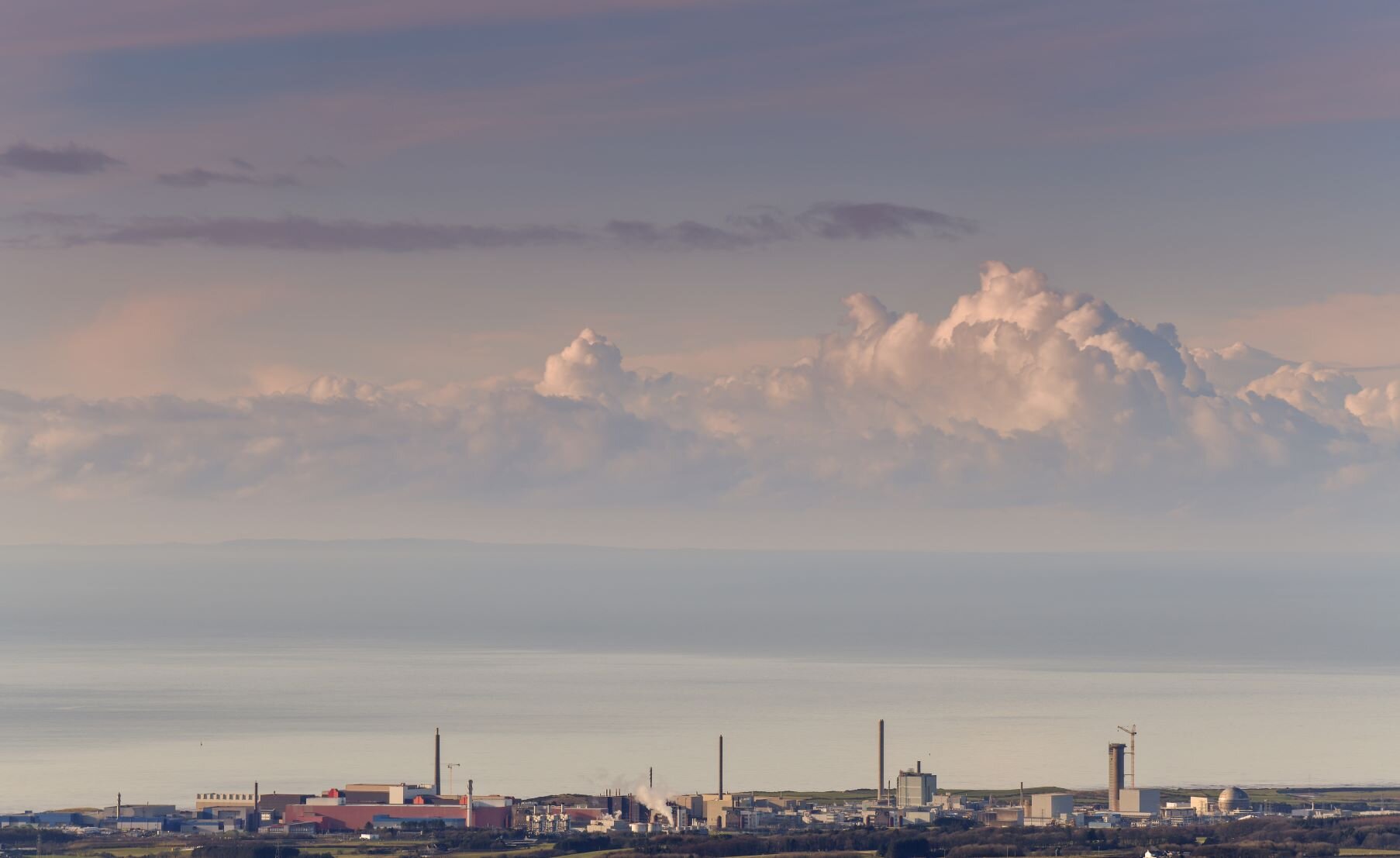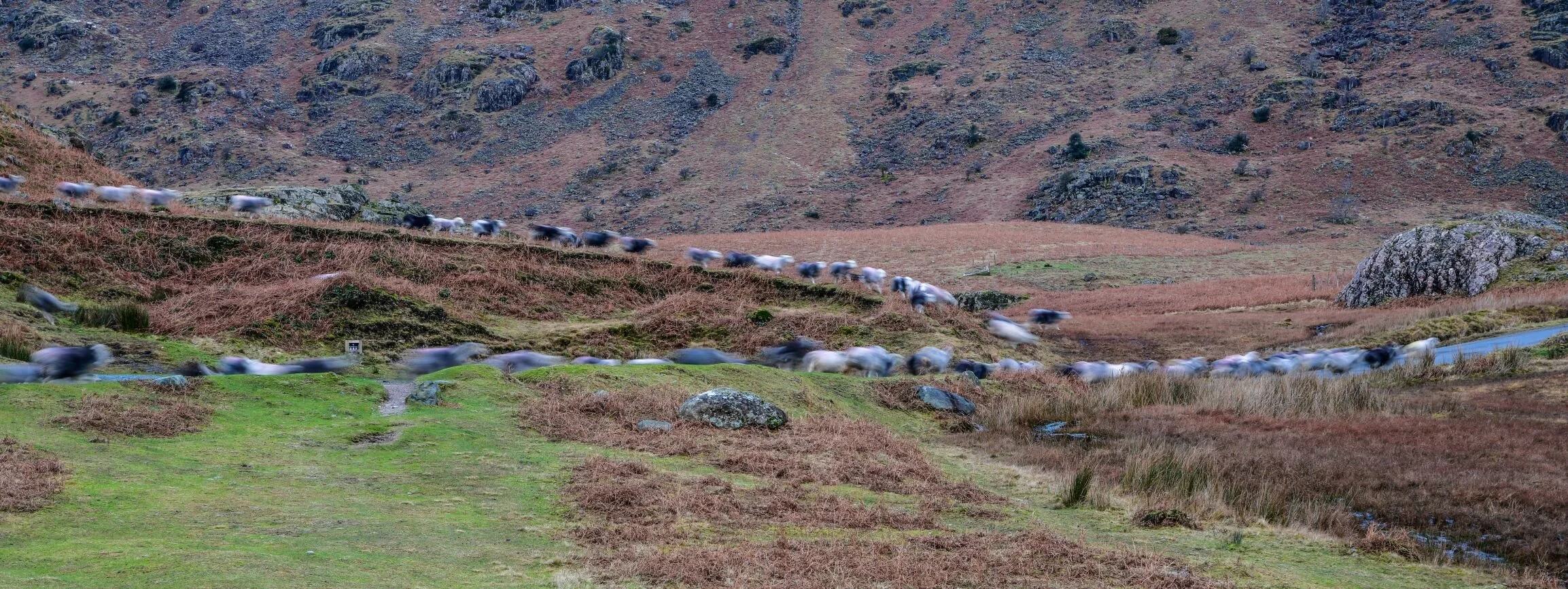The evolution of Scree: Wasdale
Aim of the experiment
To play around artistically with the dynamics of movement / rest, change and stabilisation which characterise the world via an exploration of scree’s formal characteristics of accumulation, consolidation and degradation.
Background
Of course, just because scree has certain formal characteristics doesn’t mean that we should map our own experience of the world according to this…it makes no more sense to map how we behave on the basis of ‘natural’ processes than it does to expect ‘nature’ to bend to our own will. However, there is much we could learn about how the world works, and different ways of participating in it, by watching, thinking and learning from other forms. This experiment is proposed in this spirit - as an attempt to challenge how we tend to think in fixed ways by observing how even matter (rocks, stones, earth) are in processes of constant movement. Consolidation. Accumulation. Degradation. Flow. This experiment is also a nod to a slower, more respectful engagement with scree than the practice of scree-running of which I have historically been guilty (and very much enjoyed).
Route instructions
Click on the image to open an interactive version of the map on Viewranger,
or you can download the GPX file of my route here. (© OpenStreetMap contributors)
Route grading: Difficult (but path along Wastwater Extreme) (8.5 miles, 2,900 feet of ascent)
Alternative route: the path along Wastwater is unpleasantly rough, wet and bouldery. Although the GPX file / map follows this shore (and there is a grim fascination in so doing) most people will prefer to walk back along the road on the far side of the lake having taken a short detour to explore the scree! This alternative is also described in the route instructions; I will upload a map / GPX file in due course.
Accessibility: this route is not accessible, however the Wasdale Screes can equally be admired from the road on the far side of the Lake. The writing & art experiments can easily be conducted from on of many laybys, with the option of two short wanders to either end of the screes for those with more mobility who don’t want to undertake a full day hike.
Location: The main route begins at the National Trust car park at Wasdale Head (see Google Maps).
Route adaptation for walk-from-home
Although the Wasdale Screes are particularly evocative and powerful, this experiment can be explored through any body of scree. Alternatively, if you don’t live near any screes (!), then try and extend the aims of the exercises to other kinds of matter (and the processes / dynamics behind them). What is interesting about the flow of a river, or the texture of snow, or indeed about the apparent solidity of that concrete tower block, and how can you best explore this formally? Background research will certainly help you to do this, and provide additional material to that which you gather out ‘in-the-field’.
Writing & Art Ideas, & Virtual Alternatives
Writing & Art
This experiment involves collecting ‘material’ and organising this into a form which performs the dynamics informing this experiment (movement v stability, change v rest, consolidation v accumulation v degradation). The collected material could come from a range of sources (1) material which you record or gather from the fell (words, images, objects perhaps - while remembering to leave the fell as you found it) (2) research into Wasdale and the screes (or whatever scree you are exploring) and (3) research into the physical form of screes. The artistic part of this experiment involves finding a form or process which allows this material to ebb and flow; move and pause; grow, develop and disintegrate. In the below poem I have attempted to do this by combining sections of almost imagistic poetry (spare, condensed, objective) with prosaic lyric sections of writing, to try and communicate a sense of movement. In collating the below gallery, I noticed that the images I took that day already fell into two key types - those which captured movement (in water, or through blurring) and those which were more concrete, solid, stationary. Interestingly, these images were actually taken before I had finalised the details of this exercise…
Virtual alternatives
To complete the exercise virtually, please use my own photographs in the slide show below, and complement this with independent research (eg into the history of Wasdale, the geology of scree, other literary explorations of scree etc) to produce a piece of writing following the above principles. For a work of visual art, I invite you to use my images and recombine them to better perform the dynamics of Scree. While doing so, don’t worry, I won’t be precious if you cut my work to pieces or otherwise ‘destroy’ it! Otherwise, why not do some research into literary references to scree, and use a line or two from a poem as the starting point for a work of art (remembering the dynamics which are the entire basis of this route experiment)?
My poetry
Please note that the below poem’s format will be tricky on a mobile phone (best to turn it on its side and enable auto-rotate).
The Screes: freeze-thaw cycles
‘When people go forth to see the world, they are sometimes in search of beauty.
If beauty is the leading object of their search, they need not go to Wastwater.’ Thomas Walton, 1824
The almost imperceptible eking
out existence of water beneath ice.
Gauche slightness, struggle.
From the summit ridge of Whinfell,
Sellafield’s towers looked dreamy
in the afternoon haze.
Like a small nuclear township.
10,000 employees. As important to the area
as I disagreed with it.
I decided there and then.
When I grow up I will live
in a small cottage by the sea.
The half-life of dreams.
One way – dancing turbines.
The other – lines of upside-down blurred trees.
We draw the transparent water different shades
but always blue.
A pick-up truck drew to a stop
and the driver wound down his window.
‘Which one’s the summit?’ he asked.
We were surrounded by summits
and I was photographing the second highest
of them all.
I pointed to Scafell Pike,
as was required of me,
and felt really grateful that I hadn’t been an idiot about it.
The slightest breath of air.
Sufficient resistance.
How substantive slipperiness can be.
The car park had been quiet
and everyone had looked at each other sideways
as if to ask -
Should you be here?
Should I?
Should they?
Took a wander to the pay station
but didn’t have change so didn’t pay.
How long will it be before you look me
in the eye?
I wonder.
Before you hold me?
Before I can watch that character on this TV screen
shake another person’s hand without wincing?
Pandemic as shifting matters.
Falling. Consolidating and accumulating. Scree.
To speak of ‘sternness’ and ‘sterility’. Degradation.
Inside the dismembered body of scree.
To know the mountain better than itself
as a failure of listening.
Took another photo
of another Herdwick sheep
for want of company.
Was she smiling?
I’d been allowing the remorselessness
of a solitary lockdown to eat at me,
had spent the last good hour chewing upon myself,
as had become too commonplace.
The sheep ruminated the undergrowth,
her jaw grinding my self-doubt diagonally side to side.
Of course, she didn’t give that twig of heather
about me, and neither should she.
Scree as scree deposited on scree.
My shadow is long, tall, dark and handsome:
talus deposits and bones.
Hadn’t expected the outcrops of yew tree,
growing amongst the boulders.
Had expected to prove the guidebook wrong
and of course was wrong about this.
The interminable rocks were less
solid than my own imagination
snapped ankles phone calls emergency
something about how disaster
breeds imagined disaster?
They say that 50g of yew sap
will kill you straight
and I’m not going to try
and prove them otherwise.
Across the water, Middle Fell
became a reflected water island.
I wished to swim in water earth.
I wished to feel warmer than meltwater.
I wished to swim in your
‘whole new world of images in the water!’
The treachery of talus blossom.
Moss. Ice Stone.
The games we used to play.
Surrounded by a host of the country’s
finest mountains including Great Gable,
Yewbarrow and Kirk Fell, Wasdale is also
home to England’s highest, Scafell Pike, at 978m.
This spectacular landscape is riven by steep,
fast -flowing rivers and streams all leading into Wastwater,
the cleanest and deepest lake in England, plunging to depths of 72m.
It’s not called the Vale of Water for nothing!
To Wordsworth I say:
I am not afraid of fatigue. Might I resist.
To the interpretation board
I say hello.
My best offering of morning.
What’s the difference between
a shadow and an echo?
Incidental silence. Dark rises quickly.
Nearing sunset.
Reflecting on the reflected view
in the still surface of Wastwater:
Yewbarrow
Kirk Fell
Gable
Up above, even the jagged profile of the Broad Stand
crags looked friendly in the soft late afternoon light.
To say the weather has been kind.
To say the sun is shining as a matter of mind.
I stopped to watch it sink below
the far horizon.
Photo gallery
Click on the image of the sheep below (!) to access a slide show of stasis-slow-stream: a collection of images trying to capture the dynamics of change in movement, and stability at rest, while completing the above hike on a dreamy winter’s day.


